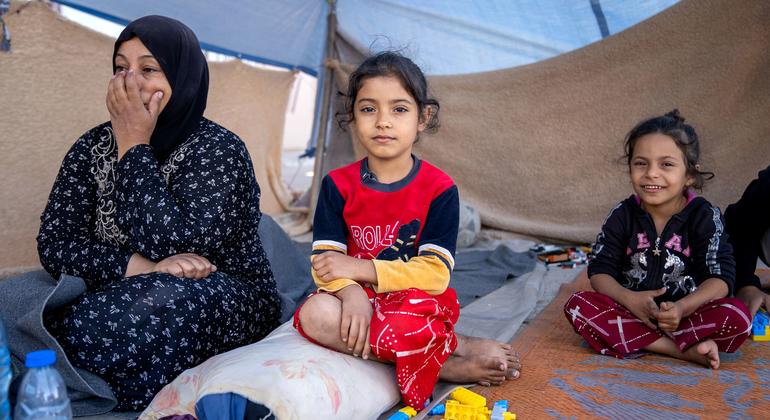Lebanon’s Humanitarian Crisis Worsens Amid Ongoing Conflict
The ongoing conflict in Lebanon has left the country grappling with a dire humanitarian situation, as recent data from UN agencies highlights the devastating toll on civilians and infrastructure. According to a recent update, over 3,100 people have been killed and more than 13,800 injured since October of last year due to Israeli airstrikes.
Hospitals in Crisis
The healthcare system in Lebanon is under immense strain, with conflict-affected regions, including Tyre, Jbeil Bint, Marjeoun, Baabda, Mount Lebanon, and Baalbek, seeing eight hospitals rendered non-functional, nine semi-functional, and six others sustaining damage.
On Sunday, media reports indicated that dozens of civilians were killed in airstrikes across Lebanon, including 23 deaths in the northern village of Almat, located 30 kilometers (19 miles) from the capital, Beirut. Among the fatalities, health authorities confirmed that at least seven were children.
Conflict Escalation
The conflict, which escalated on September 23, began when hundreds of explosive devices linked to Hezbollah detonated, causing widespread casualties. Following this, the Israeli Defense Forces (IDF) launched retaliatory airstrikes in response to Hezbollah’s cross-border rocket attacks, which had intensified in support of Hamas following Israel’s October 2023 offensive in Gaza.
As a result, nearly 1.4 million people have been impacted, with more than 875,000 displaced internally. The World Food Programme (WFP) reports that since January, around 618,000 individuals have received food or cash assistance. However, the humanitarian response is falling far short of the $116 million required, with only 6% of the funding secured so far.
Economic Devastation
The war has exacerbated Lebanon’s already struggling economy, which had been weakened by the COVID-19 pandemic and a prolonged political crisis. The conflict has caused an estimated $12 billion in damages, affecting buildings and critical infrastructure.
Agriculture, a key economic sector, is also under threat. According to WFP, the Bekaa and South regions, which account for more than 60% of Lebanon’s agricultural production, face severe disruptions.
Refugee Flows and Border Challenges
The ongoing violence has pushed 561,800 people across the border into Syria since September 23, with 66% being Syrians and 34% Lebanese. Israeli airstrikes near Lebanon’s border with Syria have severely restricted crossing points, leaving only one operational in northern Lebanon. Many refugees, fleeing on foot, are in urgent need of water, essential supplies, and psychological support, according to the UNHCR.
Additionally, between September 27 and November 5, 2024, nearly 31,000 people from Lebanon arrived in Iraq, reflecting the region’s deepening refugee crisis.
Health Emergency
The World Health Organization (WHO) has raised alarm over the escalating health crisis. In just one week, local authorities reported 214 deaths and 731 injuries related to the conflict. Southern Beirut, Bekaa, South Lebanon, and Baalbek remain under relentless attack, with restricted access hampering rescue and medical efforts.
In response, the UN has supplied more than a dozen trauma kits to hospitals in the Bekaa governorate, while an influenza vaccination campaign aims to safeguard thousands of high-risk individuals. However, the WHO warned that the continuous displacement of people into unsafe shelters heightens the risk of infectious disease outbreaks.
Ongoing Struggle for Aid
Despite international efforts, the situation in Lebanon remains desperate. Strained resources, increasing displacement, and persistent airstrikes continue to compound the humanitarian crisis. The conflict not only threatens the nation’s infrastructure and economy but also endangers the health and safety of millions of civilians struggling to survive amidst unrelenting violence.














Leave a Reply